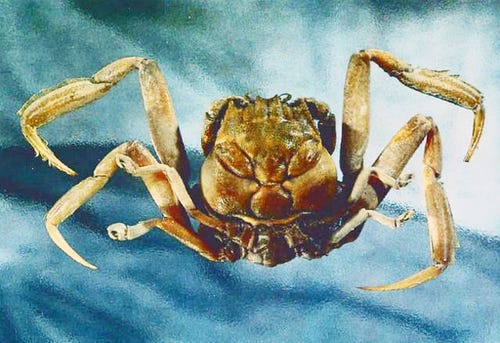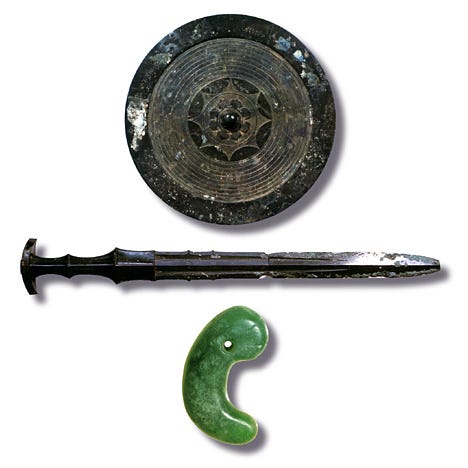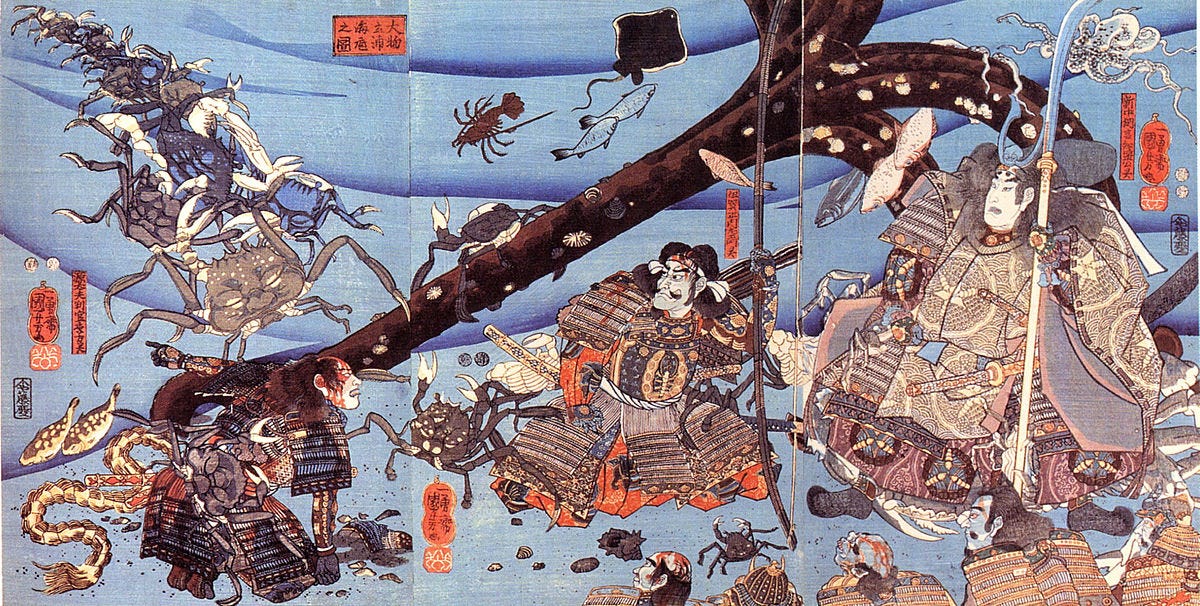This is a story about crabs. Yes, crabs, those unloved crustaceans that only tend to be tolerated if they are on your plate in a seafood restaurant.
This particular type of crab is rather unique. The Heikegani 平家蟹 (Heike Crab Heikeopsis japonica) is native to Japan, but over hundreds of years it has developed a very peculiar and slightly disturbing look. It’s hard bony exterior, the carapace, has a pattern resembling the face of an angry samurai warrior. It’s not like one of those, ‘if you look at a piece of burnt toast in a particular light, it resembles the face of Jesus’ things. The detail is quite astounding.
History.
Apparently, this is no accident; it either happened as a freak of human intervention or by paranormal reasons. But you can’t escape the story.
We have to go back to the year 1185 and the naval battle of Dan-no-ura, in the Shimonoseki Straight off the southern-most tip of Honshu. This was between the Taira (Heike) clan and the Minamoto clan.
It was a disaster for the Taira, as the Minamoto, under the leadership of Minamoto no Yoshitsune were able to turn the tides against the Taira ships. But this was made even worse by the fact that on one of the Taira ships, in their wisdom, they had on-board the six-year-old emperor Antoku, as well as the sacred Imperial regalia of the sword, the mirror and the Jewel. Their presence was supposed to act as a rallying point for the Taira troops; how could they possibly lose?
But, lose they did.
The tides switched round, the Minamoto were able to rain arrows on the Taira ships and eventually to close and board, where furious battles with dagger and sword took place. Many of the Taira warriors realised that they were doomed and chose to commit suicide, mostly by drowning.
The young emperor died in the skirmishing and there was an attempt to throw the sacred regalia overboard to prevent the Minamoto getting hold of it. The story is that they partially succeeded but items were rescued afterwards - a whole load of supernatural things going on there as well. The three items are supposed to be still kept by the current Japanese monarch, but under high security and close wraps; I am not sure if anybody has ever seen them.
Artist’s impression of the three sacred items. Although the sword worries me, it looks rather too close to a European bronze age weapon. I believe that from before the 9th century Japanese swords were straight and single-edged, very similar to Chinese swords of the age.
Nobody knows how many Taira warriors died in the battle, but the general assumption is total annihilation. It is now we have to picture the image of all of those dead samurai, restless spirits scuttled on the seabed off Shimonoseki.
Aftermath and legend.
Although the Taira/Minamoto story continued, it’s now we turn our attention back to the fishermen of the southern tip of Honshu.
Somehow, over many centuries, the superstitious fishermen started to notice that particular markings on the crabs they were pulling out of the ocean resembled the face of an angry, disgruntled samurai. The symmetrical carapace shell structure had triggered their imagination off and a common psychological phenomenon called Pareidolia allowed their fanciful thoughts to run away with them. Pareidolia, is where we start to see patterns in things that are really quite random, like faces in clouds, or ‘Jesus in burnt toast’ etc.
The story is that over the centuries the superstitious fisherman would always throw the ‘samurai-faced’ crabs back into the water, for fear that they would somehow enrage the restless souls of the defeated warriors.
A theory is that this meant that a form of unnatural selection took place through the agency of the fishermen. The samurai-faced crabs thus were able to produce other samurai-faced baby crabs, and so the process continued over hundreds of years.
I first came across this on Carl Sagan’s ‘Cosmos’ series, but there is one slight problem with the ‘fishermen throwing them back’ theory. Now, they might actually be very careful about making sure they go back in the water, but the reality seems to be that the Heike crab only grows to about an inch across, and, although the Heike crab is an edible crab, the Japanese have no appetite for them (probably due to size).
Another question that occurs to the sceptic in me; if the Heike crab is ‘native to Japan’ does the ‘samurai face’ on the crab appear off other Japanese coastal areas that are nowhere near where the battle happened? If the answer is ‘no’ then it supports both the natural and supernatural theories.
‘The ghosts of Taira Kiyomori and his followers’. Note that the crab transformation has already begun. Artist: Kuniyoshi.
Other examples from the Western world.
The John Dory fish, is supposed to have the thumb print of St Peter on its side.
The same way that Donkeys are supposed to have a connection to Jesus because they have a cross marked across their backs.
Conclusion.
Whether you want to believe in the cosmic poetry of the supernatural and the restless warriors in the depths, or modern science and evolutionary theory trying to make sense of the puzzle; my feeling is that if after 839 years people are still remembering the departed souls who died in an almost mythical sea battle, then the crabs have done a good job.
Image of the three sacred regalia courtesy of: https://www.greenshinto.com/2019/04/29/sacred-regalia-and-ascension/








What an interesting story! I will be on the lookout down by the beach.